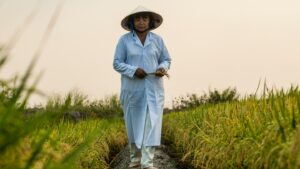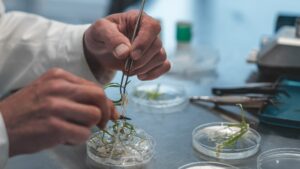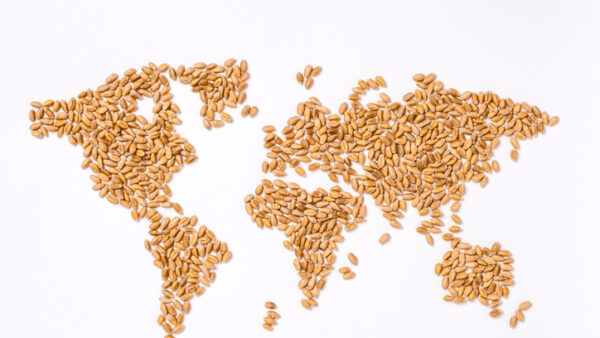HQTS’s recent webinar on the ASEAN Agricultural Commodity market explained how agriculture represents around 3% of the global GDP, however it employs nearly 30% of world’s population. In some regions, such as South Asia and Sub-Saharan Africa, farming employs more people than any other industry and how recently, agricultural commodity value chains have been under intense pressure to navigate disrupted trade flows, price volatility, contract fulfillment whilst also trying to cope with fluctuating demand. Thus, suppliers, traders and buyers must maintain high standards and sustainable and ethical practices.
Watch the full webinar here.
HQTS interviewed Arnaud Petit; the executive director of International Grain Council:
HQTS: What are currently the biggest exported and imported food commodities in Asia?
Asia has a tremendous trend, in 2012-2013, the ASEAN region imported 70 million tons of soybean and last year it was about 121 million tons. Therefore, soybean is a dynamic market within Asia and globally. Then, you have wheat with around 50 million tons of wheat importing into Asia every year. There are 3 main countries which are importing wheat mainly; the main one is China but also The Philippines and Indonesia. The wheat is used for food purposes but also milling and for industrial reasons. Rice is also a commodity, with around 10 million imports.
HQTS: Do you think Asia will become a net importer of food commodities in the future? What are the potential of countries such as India, Indonesia and Vietnam?
If we are talking about grains, Asia is definitely a net importer, but if you take aquaculture products into consideration, it’s a different story and actually it’s the reverse. Asia is importing a lot of aggregate aquacultural products, which is why it’s difficult to look at the concept of net importer or net exporter. But India is a country where we can specify that the production is rainfall production, due to climate change. India’s main purpose is to produce rice, and we have also seen tremendous developments of wheat and soybean.
But climate change could have an impact in the future too. Indonesia and Vietnam are two dynamic countries within the food processing sector, and they are developing a lot. Indonesia, mainly for the milling wheat industry and wheat-based products and Vietnam for the livestock sector, which is ever-developing.
HQTS: What is the impact of climate change on the agricultural commodities supply chain sustainability?
When we look at sustainability, firstly we need to look at it in terms of balance sheets. If we look globally, we haven’t seen an impact of climate change yet, meaning the production is still rising and we have increased by half a billion tons of grains in the last decade and 144 hectares in production. Therefore, we have seen an increase in production which could be linked to the increase of productivity.
But, if we look globally at some of the regions previously mentioned, it may have some impact and we are seeing more and more companies moving towards a different approach of climate change; such as green gas emissions in homes and some certifications in Argentina, as they are developing a way to calculate green gaseous emissions within wheat production, and then you have some companies who are addressing sustainability in terms of water management. Furthermore, some companies are looking at landscape and also, biodiversity. I would say these three are the main mega trends in terms of sustainability and we are seeing more of a need for harmonization within the grain sector.
HQTS: Do the recently signed trade agreements between EU and Asia have major effect on the market? For example, EVFTA (EU-Vietnam Free Trade Agreements)?
The EU free trade agreement; when there is a free trade agreement, there is always new opportunities because we need to keep down all the market access barriers, so there is definitely an opportunity for traders. Firstly, the EU is not necessarily the main supplier of grains to Vietnam for example or even to Asia. So, when we look at milling wheat, it’s mainly Canada, Australia or Ukraine so therefore, the EU is a question of competitiveness for the EU operators.
But 2 years ago, the EU exported only 0.6 million tons of milling wheat to the ASEAN region, but last year it did increase with links to Germany from China and also, Vietnam is every trying to improve its production in terms of meat and livestock. Barley is a great source for livestock so I think there is also an opportunity there for more trades between the EU and Vietnam but, beyond the grains, aquaculture is also very important.
HQTS: What advice do you have for agricultural commodities traders to adapt with the changes of the market, in terms of and market demand, supply chain sustainability and product quality?
Firstly, I would like to remind people that we will be in a tight situation for the next 5 years within the grains market. Meaning that when you have low stocks, you could be facing potential harm on your products and therefore, you need all the tools to protect against this. The second point, as I mentioned about sustainability is about ammoniating the system in order to provide the flexibility of originations, because it is important to have a certificate but then if you have some issues about production you need to find a new origin and by the time you start segmenting the market by different types of certificates you increase the volatility in your markets.
Therefore, you have to be very careful to work on this point. Lastly, the trade of grains within the US stock exchange and now the EU stock exchange is a very efficient stock exchange within the Asia region and could be relevant the future, as having different stock exchanges working properly together provides operators with a price discovery system and more transparency within the market.
HQTS: Anything else you would like to add?
I would add that market transparency is very important and should be monitored by the end of this year, and also trade negotiations. It will be very important for people to be aware about the trade policy development. There will be a ministerial conference negotiation by the end of this year with the world trade organization and it’s very important to look at the main political message, they may not be concrete but its crucial to look at the future of trade policies, sustainability and the link between sustainability and trade.













